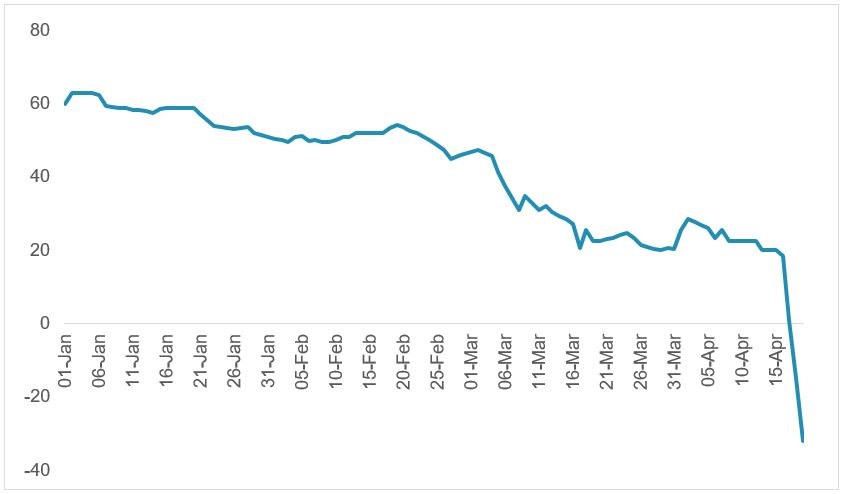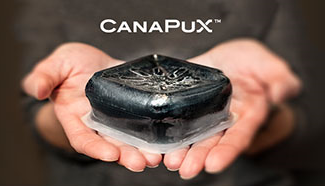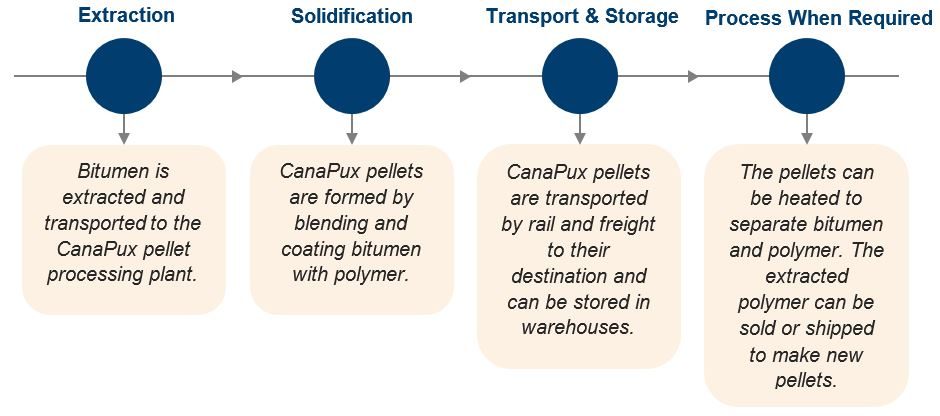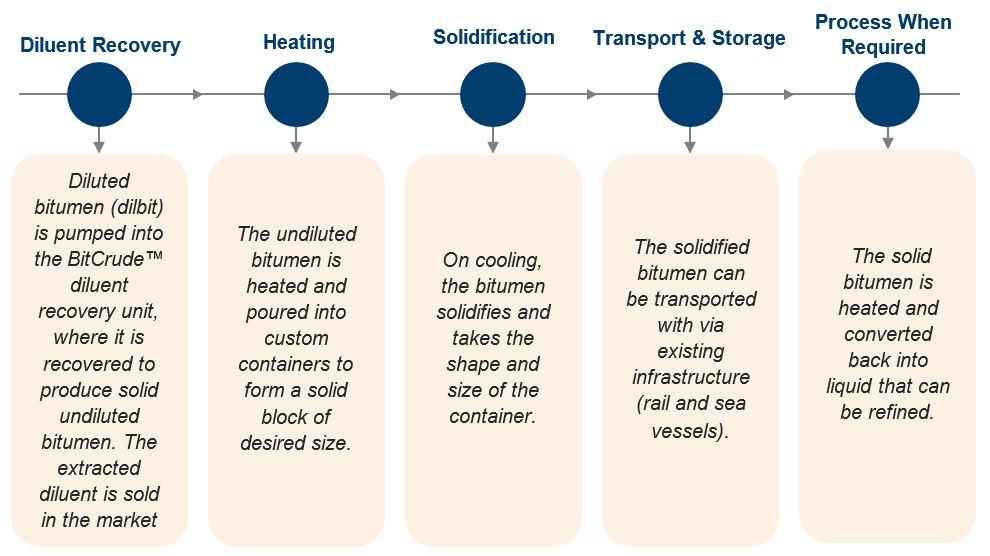Crude Oil Solidification – Unexplored Opportunities
Published on 05 May, 2020

Crude oil prices have plunged to a 22-year low. Oil importers are trying to leverage this situation by buying more oil and storing in the available facilities. However, due to high demand, these facilities have reached their limit and become expensive. The stockpile continues to build owing to the crash in demand caused by the worldwide lockdown. A few technologies have been ideally developed for easy transport of bitumen through solidification. These emerging technologies must be explored and commercialized to find a solution to the oil storage issue.
Introduction
The COVID-19 pandemic has virtually forced the entire world to go in lockdown to limit the number of casualties and contain the spread of infection. As a result of restricted movement, disrupted manufacturing lines, and stricter travel bans across the globe, crude oil, also known as black gold, has become a non-essential commodity for the first time in the history of world economy.
Oil producers are rushing to stabilize this price crash through production cuts; however, additional factors such as low consumption and non-availability of storage space have led to a further plummeting of prices. The crude oil prices of various countries are currently negative, with West Texas Intermediate (WTI) crude, the benchmark for US crude oil prices, crashing 300% from $17.85 a barrel to minus $37.63 on 20 April 2020. Negative crude oil prices mean that companies buying physical crude oil will receive a dollar reward.
It seems that we have entered a parallel universe where we are paid to buy a product, and that too one of the most expensive products in recent times.
Graph depicting historical WTI crude oil prices in USD (Jan - April)

Opportunities for Oil Importers and Exporters
With crude oil prices at their lowest level in the last 22 years, it presents an unprecedented opportunity to oil importing nations and companies to capitalize on this situation and buy in bulk for future use. Storing oil in a strategic petroleum reserve (SPR) or very large crude carrier (VLCC) are the two currently available options. However, with existing storage facilities filled to capacity and demanding higher charge for services, it is becoming non-viable for smaller businesses to rely on this option.
Two companies are researching on innovative technologies and have been successful in solidifying bitumen for easy transport. Storing solidified bitumen in warehouses is easy and safe. However, these technologies have not been explored to their maximum potential.
Available Solutions
- Strategic Petroleum Reserve – A strategic petroleum reserve (SPR) is a storage facility to store crude oil supply for emergency situations. It is present in around 30 countries, including the US, China, Japan, South Korea, and Spain. Controlled by the government, the sole purpose of this reserve is to ensure supply of petroleum products in case of a trade war or unfavorable global trade conditions. These SPRs can be made available to companies if they enter into an agreement with the beneficiary country.
- Very Large Crude Carrier – Storing oil in a large vessel at sea is another alternative. However, around 160 million barrels of oil are already stored in 60 very large crude carriers (VLCCs) globally. Even though 770 VLCCs are available, the contract cost for storage has increased 3–4x, making them an expensive option.
Unexplored Opportunities
There are some breakthrough innovative technologies that can be utilized to store crude oil safely and economically. However, they have yet not been explored to their full potential. Both the technologies listed below are at a technology readiness level of 6 (Technology Demonstration/ Industrial Pilot) and expected to be implemented extensively in the near future.
-
CanaPuxTM – This technology was developed by Canadian National Railway (CN), a leading North American transportation and logistics company, in conjunction with InnoTech Alberta, a research organization. The technology has the ability to convert liquid bitumen into solid pellets, making it easy to transport and store. They are currently working with Advantage Heavy Oil Development Ltd. (100,000 barrels/day) and Wapahki Energy (10,000 barrels/day) to commercialize the technology.

Image Source – Company Website
Process for solidifying bitumen using CanaPux™ technology

Advantages:- The pellets are non-inflammable and weatherproof.
- The pellets are designed to prevent leakage.
- They can be transported in open-top gondola cars, which are lighter than oil tankers.
- The issue of freezing the pipeline for transport is avoided.
- The pellets float on water and can be easily recovered in case of a spill.
-
BitCrudeTM – Melius Energy has created a process to extract diluent from the pumped bitumen and extract the undiluted solid bitumen, which can be solidified and transported.

Image Source – Alberta Venture
Process for solidifying bitumen using BitCrude™ process

Advantages:
- It is an additive- and chemical-free process.
- The process uses the world’s first electric diluent recovery unit.
- The solidified bitumen is non-inflammable and non-toxic, and floats on sea/fresh water in case of spills.
Conclusion
There is immense potential in the unexplored crude oil storage technology. To gain from the current fall in oil prices, companies must buy and store crude oil. Expanding the options available is a time- and capital-intensive process. The innovative unexplored technologies described above are expected to be commercialized in the short term. Oil producers as well as consumers can collaborate with these technology developers to license their technology and leverage the current situation. Deploying such technologies creates a win-win situation for oil producing and oil consuming companies as both can opt to solidify and store bitumen in warehouses for long periods cost-effectively and without harming the environment. The low-priced stored bitumen can be processed and used in future once the economy resumes its pace.
